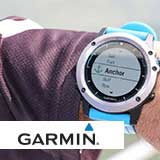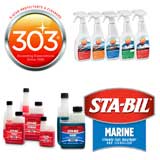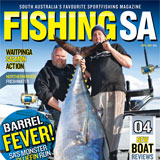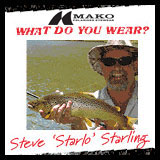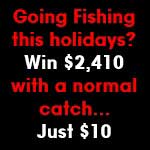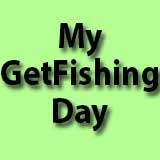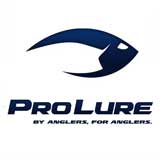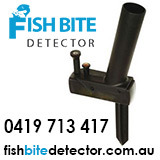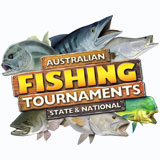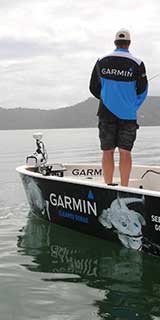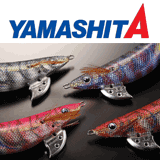Species ID
View AllYellowfin Bream
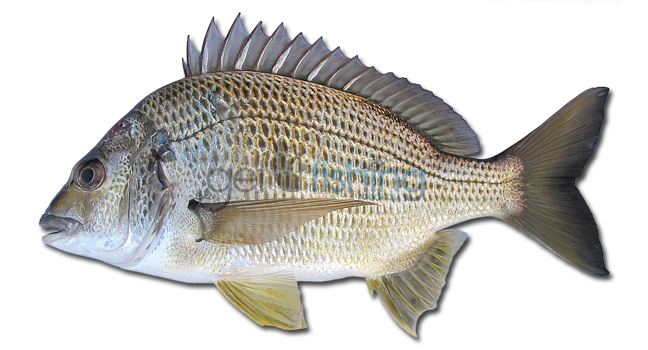
Yellowfin bream are often mistaken for Black bream. Yellowfin bream have yellow pectoral, ventral and anal fins and are generally more silver in appearance. Unlike Black bream, Yellowfin bream are not restricted to estuarine environments.
Other names
Bream, Surf Bream, Australian Seabream, Sea Bream, Silver Bream, Yellow-finned Bream
Common size
25-30cm
Related species
Black bream, Tarwhine (Silver bream), Snapper
Habitat
Yellowfin bream inhabit surf beaches and inshore rocky reefs and headlands as well as estuarine environments such as sand flats and areas of structure such as fallen trees (snags), rock bars, pylons, oyster leases, breakwalls and boat ramps.
Reproduction
Reaches maturity at approximately 22cm and 5 years of age.
Diet
Mussels, barnacles, tubeworms, crabs, bloodworms, squirtworms, beach worms, nippers (ghost shrimp), cockles, prawns, pippies, small fish, etc.
Pound for pound
Bream provide fantastic sport fishing on light tackle and are capable of big bust-offs around structure such as snags, rocks and oyster leases. Don’t be fooled, these little guys can bring a grown man to his knees in comps or when another expensive lure gets towed home.
Catch care
Dispatch your fish humanely and immediately after capture. Keep out of sunlight in a wet hessian bag (or similar), ice esky or an ice slurry for up to a few hours and refrigerates as soon as practicably possible. Most legal-sized fish are >5yrs old so consciously limit your catch not catch your limit.
Information courtesy of Danny Weaver, Gold Coast QLD and DAFF QLD.
Fast Facts photo featuring Jo Starling with a typical Yellowfin Bream taken on fly in Tuross River, NSW.
Where to fish
Yellowfin bream are found throughout the Indo-West Pacific and in Australia occur between north Queensland to Victoria. As opposed to Black bream, Yellowfin bream are caught in the surf and around headlands and inshore islands as well as estuary environments. When targeting them focus on open sand flats as well as areas of structure such as fallen trees (snags), rock bars, pylons, oyster leases, breakwalls and boat ramps.
How to target
Yellowfin bream can be targeted from the shore or by boat and can be found around structure or on open sand flats and beaches. They are aggressive predators that will readily take lures or baits. Target them around headlands or in the surf using natural baits such as beach worms, pipis or prawns. Likewise, baits work well in the estuary, however, targeting them with lures or fly provides a greater challenge. During daylight hours target them around structure and at night also try fishing the adjacent open areas such as sand flats.
Rod & Reel
Estuary: A light to medium outfit consisting of a 6′-7′ carbon fibre or graphite rod in the 2-6kg range paired with a light threadline reel in the 1000-3000 size range.
Beach/rock: A light to medium outfit consisting of a 9′-11′ carbon fibre or graphite rod in the 5-9kg range paired with a light threadline reel in the 3000-6000 size range.
Line & Leader
Braid or monofilament mainline in the 2-8lb range with a 4-10lb fluorocarbon leader. Fish heavier leader around structure if bust-offs are frequent.
Terminal Tackle
- Hook: Size 2 to 3/0. Anything will work. Mustad Viking 540 or Gamakatsu Octopus style will suit most applications.
- Sinker: Limit weight as much as possible or fish unweighted if conditions allow.
- Trebles: Decoy YS 25’s, Owner ST-11’s, or VMC.
- Jighead: 1/32 – 1/4 oz to suit depth.
Best Lures
Popular bream lures include Jackall chubbies, Berkley gulp plastics, Squidgie plastics, Ecogear blades, vibes, small diving minnows, etc.
Best Bait
Good baits include nippers (ghost shrimp), prawns, pilchards, small strip/fillet baits, crabs, bread, pippies, beach worms & blood worms.
Hints and tips
Yellowfin bream are often mistaken for Black bream. Yellowfin bream have yellow pectoral and anal fins and are generally more silver in appearance. Unlike Black bream, Yellowfin bream are not restricted to estuarine environments.
- Bream can be finicky and like a slow-sinking bait or lure. When lure fishing allow 3-5 seconds between twitching, hopping or slow rolling.
- When using fleshy baits try tweaking/bending the point of your hook outwards with pliers for a better strike rate.
- When using bait or plastics use minimum weight to keep you in the strike zone longer.
- Berleying is a good way to bring bream to you, keeping them interested for longer. A good mix of chook pellets, bread, tuna oil, old pilchards or crustacean shells will do the trick.
Rigging for luring
The trend amongst anglers targeting Yellowfin bream on lure would have to be braided line but monofilament also has it’s advantages. Attach the mainline to a 1-2m fluorocarbon or monofilament (for surface luring) leader with a joining knot such as an Albright, Double Uni or Bimini Twist. Attach the leader to the lure with a loop knot such as a Lefty’s Loop, Perfection Loop or Rapala Knot. This will optimise its action and allow the lure to swim freely in the water.
Rigging for bait fishing
When fishing with bait use as little weight as possible. In some situations no lead is possible which is a great way to present ‘drift’ baits down the burley trail. Hook to mainline as follows: Tie hook to fluorocarbon leader with a double-blood knot or other standard knot. If using weight insert a running sinker onto the leader now. Connect leader to mainline using a Double uni or other joining knot, or alternatively use a swivel to reduce line twist particularly when fishing with monofilament line.
Information courtesy of Danny Weaver, Gold Coast QLD
Yellowfin bream are found throughout the Indo-West Pacific and in Australia occur between north Queensland to Victoria. As opposed to Black bream, Yellowfin bream are caught in the surf and around headlands and inshore islands as well as estuary environments.
3 stars. Yellowfin Bream are good eating table fish that can be caught all months of the year. Fish <30cm provide a low yield and are better released back into the environment. The flesh is firm and white and for this reason they are a commercially sought after species. Leave a few hours in the fridge to allow flesh to firm before filleting. Bream are fantastic baked whole in the oven or on the BBQ, battered, crumbed, grilled, steamed or roasted.
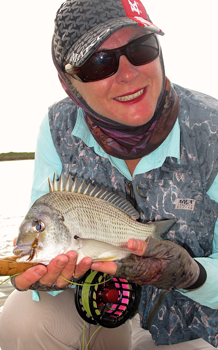
- Belong to the family Sparidae (sea breams)
- Often confused with Black Bream. Distinguished by their yellow pectoral, ventral and anal fins
- Related species include Black Bream, Snapper and Tarwhine
- Can grow to 66cm in length and 4kg in weight
- Found in QLD, NSW and VIC and other Indo-West Pacific countries such as Japan and Taiwan
- Spawn in winter around river mouths
- Good eating

